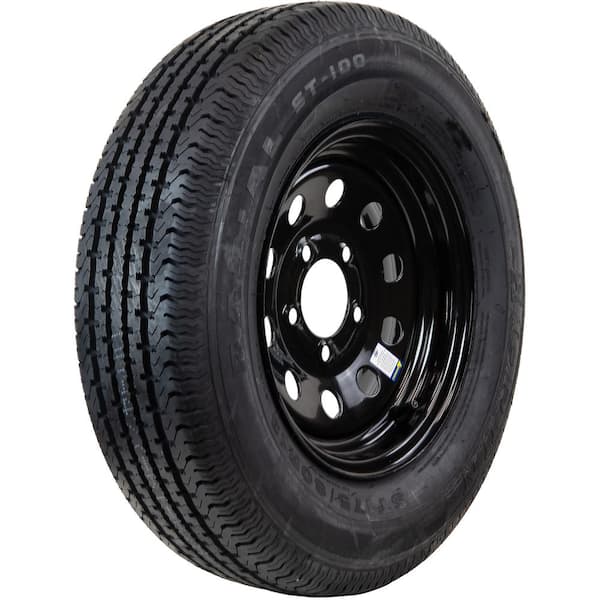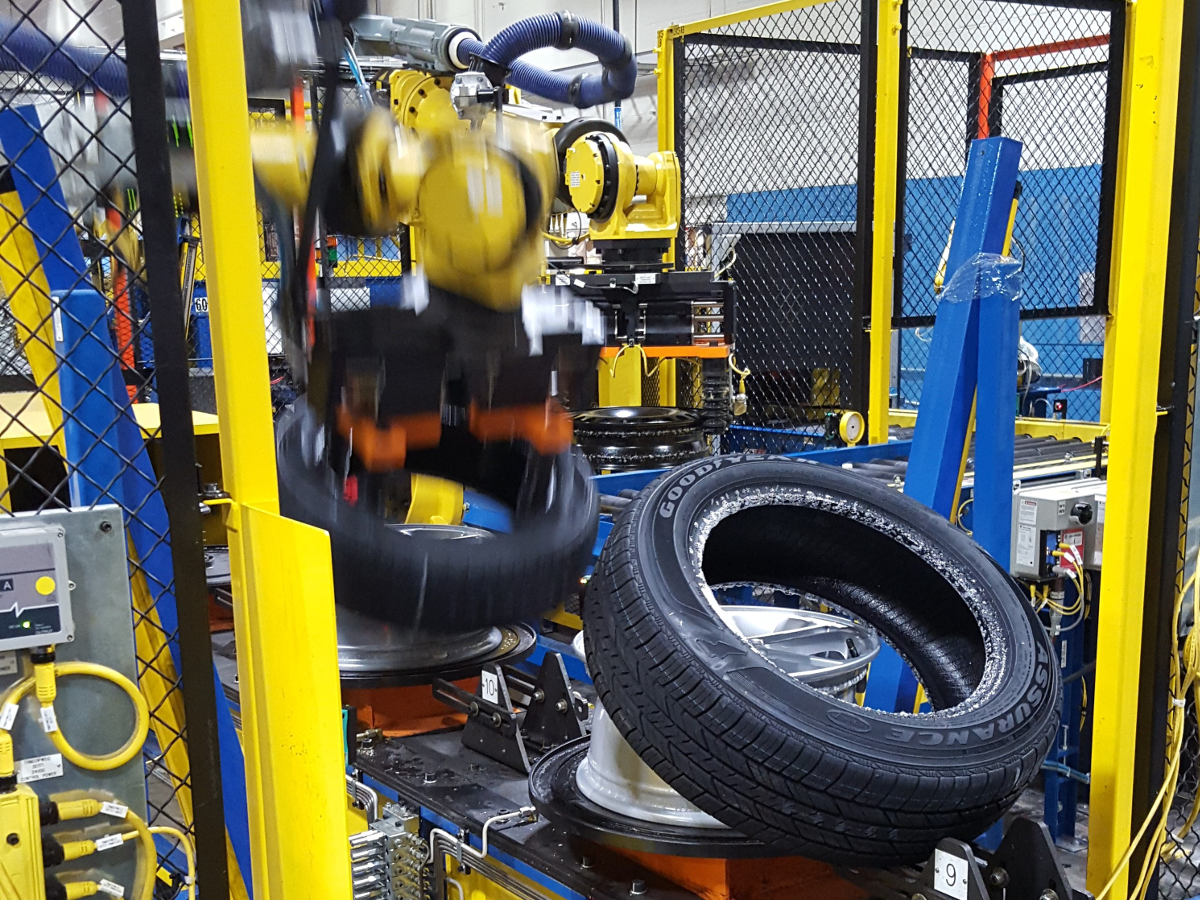Are you tired of the constant hassle of dealing with wheel tire assembly issues? Imagine a world where your car runs smoothly, every single ride being as comfortable as the last.
In the realm of automotive care, understanding wheel tire assembly can be a game-changer for you. This is the key to not only enhancing your vehicle’s performance but also ensuring your safety on the road. You might be wondering what makes this process so crucial and how it directly impacts your driving experience.
Well, brace yourself for an eye-opening exploration that will transform how you think about your car’s wheels and tires. Dive deeper to uncover the secrets behind a seamless wheel tire assembly and learn how you can take control of your driving experience like never before.
Importance Of Wheel Tire Assembly
The wheel tire assembly is crucial for any vehicle’s performance. A well-assembled wheel ensures safety, smooth driving, and efficient fuel consumption. Poorly assembled wheels can lead to accidents and increased wear. Understanding the importance of wheel tire assembly is vital for every vehicle owner.
Why Proper Wheel Tire Assembly Matters
A well-assembled wheel ensures even tire wear. This extends the tire’s lifespan. Proper assembly maintains the car’s balance. It also improves handling and ride comfort. Safety is greatly enhanced with correctly assembled wheels.
Impact On Fuel Efficiency
Correct assembly reduces rolling resistance. Lower resistance means better fuel efficiency. This leads to savings on fuel costs. Properly aligned wheels decrease engine strain. The vehicle uses energy more efficiently.
Ensuring Vehicle Safety
Secure wheel assembly prevents accidents. It minimizes the risk of tire blowouts. Steering control is improved, reducing collision chances. Proper assembly reduces vibration. Stability on the road is maintained.
Improving Driving Comfort
A balanced wheel offers a smoother ride. Vibration and noise are significantly reduced. Proper assembly enhances driving pleasure. Passengers enjoy a comfortable journey. The vehicle’s handling feels more responsive.
Long-term Cost Savings
Correct wheel assembly prevents premature wear. This saves on frequent tire replacements. Fuel costs are reduced with improved efficiency. Fewer repairs mean lower maintenance expenses. A well-maintained vehicle retains its value.

Credit: aerosavvy.com
Key Components
The wheel tire assembly is crucial for any vehicle’s performance. Understanding its key components is essential for anyone interested in vehicles. Each component plays a vital role in ensuring a smooth and safe ride. Let’s explore these components in more detail.
Tires
Tires are the only part that touches the road. They provide traction, stability, and control. Tires come in various sizes and tread patterns. Each type is designed for specific road conditions. Regular checks can prevent wear and tear. Proper inflation improves fuel efficiency and safety.
Wheels
Wheels support the tires and attach to the vehicle. They come in different materials like steel and alloy. Each material offers unique benefits. Steel wheels are durable and affordable. Alloy wheels are lightweight and enhance performance. Proper wheel alignment extends tire life.
Valves
Valves play a crucial role in air retention. They allow air to enter and exit the tire. Valves should be checked regularly for leaks. A damaged valve can lead to air loss. Always replace faulty valves promptly. This ensures tire pressure remains constant.
Balancing Weights
Balancing weights ensure even weight distribution on the wheel. They prevent vibrations at high speeds. Proper balancing improves ride comfort. It also prolongs the life of tires and suspension parts. Regular balancing checks are essential for optimal performance.
Tire Selection Criteria
Choosing the right tire is crucial for safety and performance. Tire selection criteria play a significant role in ensuring optimal driving experience. Different factors contribute to making the best choice for your vehicle.
Tread Patterns
Tread patterns affect grip and handling. They determine how the tire interacts with the road. Some patterns are designed for wet conditions. Others excel in dry weather. Consider what conditions you drive in most frequently. This will guide your choice.
Material Composition
Material composition impacts durability and comfort. Tires are made from different rubber types. Some offer better traction. Others provide a smoother ride. Evaluate what you value more in your driving experience. Materials also affect fuel efficiency. Choose wisely.
Size And Specifications
Size and specifications influence compatibility and performance. Every vehicle requires specific tire dimensions. Incorrect sizing can lead to safety issues. Specifications also include load capacity and speed rating. These ensure the tire meets your vehicle’s needs. Check the manufacturer’s guide for accurate information.

Credit: www.homedepot.com
Proper Installation Techniques
Proper installation of wheel tire assemblies ensures safety and performance. Align wheels accurately and tighten bolts securely. Check for any signs of damage before assembly.
Proper installation techniques for wheel tire assembly are crucial for both safety and performance on the road. If you’ve ever experienced a shaky steering wheel or uneven tire wear, you know how essential it is to get this right. Let’s explore some of the best practices to ensure your wheels are mounted, balanced, and torqued correctly.
Mounting Procedures
Mounting your tires correctly is the first step in proper installation. Ensure the tire is compatible with the wheel size and type. Use a tire machine to mount the tire onto the rim, taking care not to damage the tire beads. Check that the valve stem is installed properly to avoid air leaks. Once mounted, inspect the tire to ensure it sits evenly on the rim. Misalignment can lead to uneven wear and potentially dangerous driving conditions.
Balancing Methods
Balancing your tires is vital to avoid vibrations and improve tire longevity. Use a wheel balancer to measure weight distribution. Attach small weights to the rim to correct imbalances. Dynamic balancing is recommended for most vehicles, as it considers both the wheel’s rotational and side-to-side balance. If you’ve ever felt a persistent vibration at high speeds, it might be time to revisit your balancing technique.
Torque Specifications
Properly torquing your wheel nuts ensures they are neither too loose nor too tight. Use a torque wrench to apply the manufacturer’s recommended torque setting. This prevents wheel detachment and other issues. Tightening the nuts in a crisscross pattern ensures even pressure distribution across the wheel. Did you know uneven torque can warp your brake rotors over time? Double-checking your work saves you time and costly repairs. Remember, each step in the installation process plays a pivotal role in your vehicle’s performance and safety. How confident are you in your current wheel tire assembly techniques?
Performance Enhancement Strategies
Enhancing wheel tire assembly performance involves optimizing balance, alignment, and pressure. Proper techniques boost safety and efficiency. Regular maintenance ensures smooth driving and extends tire life.
Boosting the performance of your wheel tire assembly involves more than just picking the right tires. It’s about fine-tuning various aspects that can dramatically affect how your vehicle handles, rides, and performs. Let’s dive into practical strategies you can use to enhance the performance of your wheel tire assembly. From ensuring your wheels are aligned properly to managing tire pressure and maintaining optimal rotation, each step can make a noticeable difference.
Alignment Adjustments
Proper alignment is essential for your vehicle’s performance and your tires’ longevity. Misaligned wheels can lead to uneven tire wear and poor handling. Have you noticed your car pulling to one side? This could be a sign that your alignment is off. Regular alignment checks can help you avoid these issues. During an alignment service, technicians adjust the angles of the wheels so they are set to the car manufacturer’s specifications. This not only improves handling but also increases fuel efficiency.
Pressure Management
Maintaining the correct tire pressure is crucial for safety and performance. Overinflated tires can lead to a bumpy ride, while underinflated tires can decrease fuel efficiency and increase the risk of a blowout. Are you checking your tire pressure regularly? Use a reliable tire pressure gauge to ensure your tires are at the optimal level. Check them when they are cold, as heat can cause air to expand and give a false reading. Keeping your tires properly inflated can also extend their lifespan, saving you money in the long run.
Rotational Practices
Tire rotation is one of the simplest ways to maintain even tire wear. Different driving styles can cause certain tires to wear faster than others. How often are you rotating your tires? A good rule of thumb is to rotate your tires every 5,000 to 7,000 miles. This helps ensure that all tires wear evenly and can extend their life. It’s a small investment of time that can lead to big savings on tire replacements. By paying attention to these performance enhancement strategies, you’re not just maintaining your vehicle; you’re maximizing its potential on the road. What changes can you make today to improve your driving experience?
Safety Considerations
Ensuring the safety of wheel tire assemblies is crucial for any vehicle. Proper attention helps avoid accidents and costly repairs. Focus on key safety aspects to enhance vehicle performance. Let’s dive into some important safety considerations.
Regular Inspections
Regular inspections are vital for wheel tire safety. Examine tires for visible damage or unusual wear patterns. Check tire pressure to ensure optimal performance. Proper inflation reduces the risk of blowouts. Inspect wheel alignment to prevent uneven wear. Regular checks keep your vehicle safe on the road.
Wear And Tear Monitoring
Monitoring wear and tear increases tire lifespan. Observe tread depth regularly. Shallow treads reduce grip and safety. Uneven wear indicates alignment or suspension problems. Address these issues promptly to maintain tire integrity. Replace tires when they show signs of excessive wear. Safe tires mean a safe journey.
Emergency Preparedness
Being prepared for emergencies enhances road safety. Keep a spare tire in good condition. Know how to change a tire safely. Equip your vehicle with basic tools for tire changes. Have a roadside assistance plan in case of unexpected issues. Preparation keeps you calm during tire-related emergencies.
Innovations In Wheel Tire Technology
Innovations in wheel tire technology are changing how we drive. New designs enhance safety and performance. Engineers focus on durability and efficiency. These advancements offer drivers more control on the road. Let’s explore some exciting innovations in tire technology.
Run-flat Tires
Run-flat tires keep you moving after a puncture. They support the vehicle for a short distance. This means fewer roadside emergencies. You don’t have to change tires immediately. Run-flat tires offer peace of mind.
Smart Tire Systems
Smart tire systems use sensors to monitor tire health. They track pressure and temperature. This helps drivers avoid accidents. Alerts notify you of potential issues. Smart tires improve safety and performance.
Advanced Materials
Advanced materials make tires stronger and lighter. Engineers use special compounds for better grip. These materials resist wear and tear. They also enhance fuel efficiency. Advanced materials lead to longer-lasting tires.
Environmental Impact
The wheel tire assembly industry faces environmental challenges. These challenges stem from resource extraction, waste production, and energy consumption. Companies now focus on reducing their carbon footprint. They aim to create sustainable solutions that protect the planet. This shift encourages recycling, eco-friendly materials, and sustainable manufacturing practices.
Recycling Practices
Recycling is crucial in reducing waste in tire production. Many companies collect old tires to repurpose materials. This process saves raw materials and reduces landfill waste. Innovative recycling methods transform used tires into new products. These can be playground surfaces or road materials. Efficient recycling extends the life cycle of tire materials.
Eco-friendly Materials
Eco-friendly materials are gaining popularity in tire production. They help reduce environmental harm. Natural rubber and bio-based oils are examples. These materials lower the need for synthetic chemicals. Companies also explore biodegradable options. These options break down naturally, leaving less waste. Choosing eco-friendly materials benefits both the planet and consumers.
Sustainable Manufacturing
Sustainable manufacturing reduces energy and resource use. Many factories now use renewable energy sources. This change decreases carbon emissions during production. Efficient machinery also contributes to sustainability. It minimizes energy consumption and waste production. Sustainable practices ensure that environmental impact is kept low.

Credit: iwt-global.com
Frequently Asked Questions
What Is Wheel Tire Assembly?
Wheel tire assembly refers to the process of mounting a tire onto a wheel. This includes ensuring proper alignment and balancing for optimal performance. It is crucial for vehicle safety and efficiency. Correct assembly prevents uneven wear and improves driving stability.
Why Is Tire Balancing Important?
Tire balancing is crucial for smooth vehicle operation. It prevents uneven tire wear and enhances driving comfort. Balancing ensures equal weight distribution, reducing vibrations and stress on suspension components. Properly balanced tires improve fuel efficiency and extend tire lifespan.
How To Know If Tire Assembly Is Correct?
Check for smooth driving and even tire wear. Proper assembly results in balanced tires, reducing vibrations while driving. Inspect for signs of misalignment, like uneven tread wear or pulling to one side. Regular maintenance checks help ensure correct assembly.
What Tools Are Needed For Tire Assembly?
Essential tools include a tire iron, torque wrench, and tire pressure gauge. A tire iron helps with mounting and unmounting tires. A torque wrench ensures correct wheel bolt tightening. A tire pressure gauge helps maintain optimal tire inflation, crucial for performance.
Conclusion
A well-balanced wheel and tire assembly enhances vehicle performance. It ensures a smooth ride. Proper maintenance prevents wear and tear. It saves money in the long run. Regular checks keep your wheels in top shape. This boosts safety on the road.
Choosing the right tires is crucial. They affect fuel efficiency and handling. Remember to consult a professional for advice. Their expertise helps make informed decisions. Keeping these tips in mind ensures a smoother journey. Happy driving!
Recent Posts
Cold-Weather Driving Essentials: Top Gloves for Safe Winter Travel
Keep your hands warm and your steering wheel secure this winter with our top glove picks. Discover the best options for safe and comfortable cold-weather driving!
Tesla Roof Rack Storage: Ultimate Guide to Secure and Versatile Cargo Solutions
Tesla roof rack storage offers extra space to carry luggage and gear securely on your Model Y. These racks fit various needs, from bikes to kayaks, making travel easier. ...

